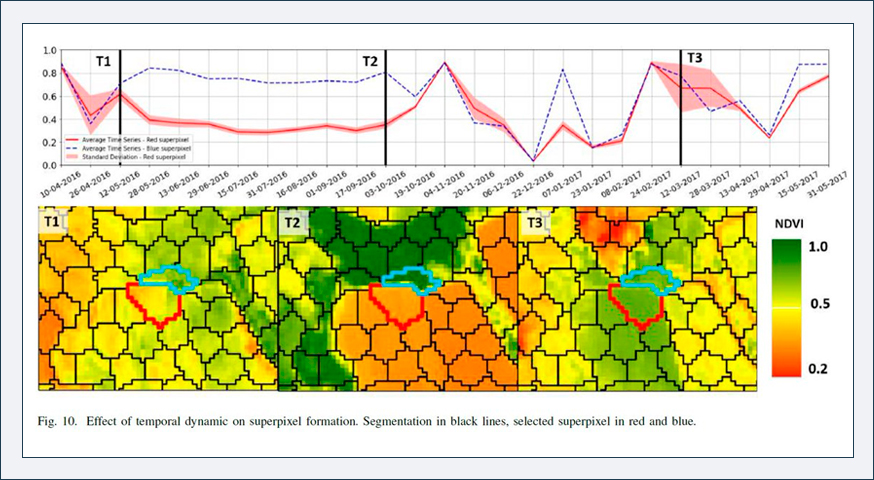Simple Non-linear Iterative Temporal Clustering
by Anderson Soares¹; Thales Körting¹; Leila Fonseca¹; Hugo Bendini¹
1Earth Observation and Geoinformatics Division, National Institute for Space Research (INPE), Avenida dos Astronautas, 1758, Jardim da Granja, Sao Jose dos Campos, SP 12227-010, Brazil
DOI: https://doi.org/10.1109/TGRS.2020.3033266
Publisher: IEEE | Published: 16 November 2020
Published in: IEEE Transactions on Geoscience and Remote Sensing ( Volume: 59, Issue: 9, Sept. 2021)
Abstract
Classifying dense satellite image time series has become a necessity, especially with the recent efforts to create analysis ready data cubes. Approaches developed to perform this task are usually pixel-based. Even though these approaches can achieve good results, they do not take advantage of the intrinsic spatial correlation of geographic data nor do they consider spatial heterogeneity along with the time series. Region-based classification is a suitable solution to incorporate contextual information for dense satellite image time series classification. In this article, we introduce a new segmentation method based on a superpixel approach. This method creates multitemporal superpixels, which are meaningful regions in space and time. To evaluate the performance of the proposed method, tests were performed on two data sets using a total of 23 ground-truth references. Experimental results showed that the method performed well, achieving a good boundary agreement and obtaining high scores on the three metrics used for evaluation.
Keywords: Image segmentation, Satellites, Time series analysis, Feature extraction, Spatiotemporal phenomena, Computational efficiency, Sensors
Share and Cite
A. Soares, T. Körting, L. Fonseca and H. Bendini, “Simple Nonlinear Iterative Temporal Clustering,” in IEEE Transactions on Geoscience and Remote Sensing, vol. 59, no. 9, pp. 7669-7679, Sept. 2021, doi: 10.1109/TGRS.2020.3033266




